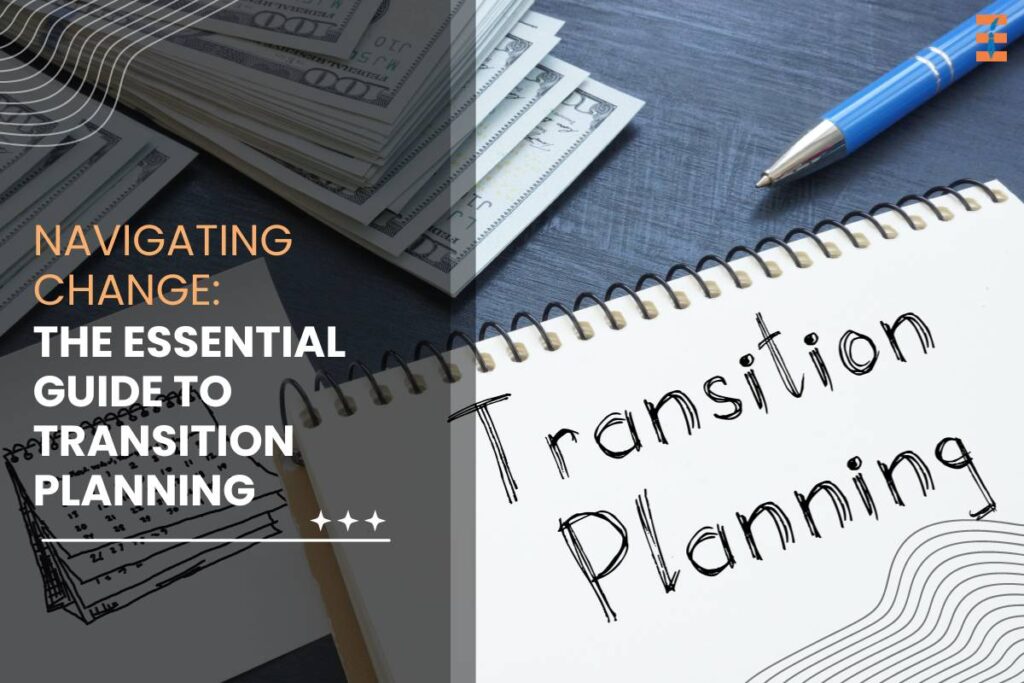Change is a constant in life, and navigating transitions is an essential skill for personal and professional growth. Whether it’s a career shift, a move to a new city, or a major life event, transition planning plays a crucial role in helping individuals and organizations adapt smoothly to new circumstances. In this comprehensive guide, we will explore the importance of transition planning, key components of effective transition strategies, and practical tips for successfully managing change.
Understanding Transition Planning
It is the process of preparing for and managing significant changes in life or business. It involves identifying potential challenges, setting goals, and implementing strategies to navigate the transition successfully. Whether it’s a planned transition, such as retirement or starting a new job, or an unexpected change like a merger or relocation, effective planning can minimize disruptions and maximize growth opportunities.
The Importance of Transition Planning
1. Minimizing Disruptions

Change can be disruptive, leading to uncertainty and stress. Transition planning helps individuals and organizations anticipate challenges and implement strategies to minimize disruptions.
2. Maximizing Opportunities
Transitions often present new opportunities for growth and development. By carefully planning for change, individuals and organizations can capitalize on these opportunities and achieve their goals more effectively.
3. Building Resilience
Transition planning builds resilience by helping individuals and organizations develop the skills and resources needed to adapt to change. By proactively addressing challenges, they can emerge stronger and more resilient.
4. Enhancing Decision-Making
It involves evaluating options, setting priorities, and making informed decisions. This process enhances decision-making skills and fosters a sense of clarity and purpose.
Key Components of Transition Planning
1. Assessment
The first step in this is to assess the current situation and identify the need for change. This may involve evaluating personal or organizational goals, strengths, weaknesses, opportunities, and threats.
2. Goal Setting

Once the need for change is identified, the next step is to set clear, achievable goals. These goals should be specific, measurable, attainable, relevant, and time-bound (SMART).
3. Resource Identification
Transition planning involves identifying the resources needed to support the transition process. This may include financial resources, human capital, technology, and external support services.
4. Risk Management
Transitions often involve risks and uncertainties. Effective transition planning includes identifying potential risks and developing strategies to mitigate them.
5. Communication
Clear and effective communication is essential during times of transition. This includes communicating goals, expectations, and plans to stakeholders, as well as soliciting feedback and addressing concerns.
6. Implementation
Once the transition plan is developed, it must be implemented effectively. This may involve coordinating activities, allocating resources, and monitoring progress toward goals.
7. Evaluation
It should include regular evaluation and adjustment. This allows individuals and organizations to assess the effectiveness of their strategies and make necessary adjustments to achieve their objectives.
Practical Tips for Successful Transition Planning
Here are some practical tips for successfully navigating transitions:
1. Start Early
Effective transition planning takes time. Start early to allow ample time for assessment, goal setting, and implementation.
2. Seek Support
Don’t be afraid to ask for help. Whether it’s seeking advice from mentors, consulting with experts, or leveraging support networks, seeking support can help you navigate transitions more effectively.
3. Stay Flexible

Transitions rarely go exactly as planned. Stay flexible and be prepared to adjust your plans as needed in response to changing circumstances.
4. Focus on the Positive
While transitions can be challenging, they also present new opportunities for growth and development. Focus on the positive aspects of change and approach transitions with a sense of optimism and curiosity.
5. Take Care of Yourself
Transitions can be stressful, both personally and professionally. Take care of yourself by prioritizing self-care activities such as exercise, mindfulness, and spending time with loved ones.
6. Celebrate Successes
Celebrate milestones and successes along the way to keep morale high and maintain momentum toward your goals.
Conclusion
It is a critical process for navigating change effectively. Whether you’re facing a career transition, a major life event, or a significant organizational change, effective planning can help you minimize disruptions, maximize opportunities, and emerge stronger and more resilient. By understanding the importance of transition planning, incorporating key components into your strategy, and following practical tips for success, you can navigate transitions with confidence and achieve your goals with ease.
Frequently Asked Questions (FAQs)
What is transition planning, and why is it important?
Ans: It is vital for managing significant changes in life or business, helping to anticipate challenges, capitalize on opportunities, and enhance decision-making skills during transitions.
Who should be involved in the transition planning process?
Ans: All stakeholders affected by the change should be involved, including individuals undergoing personal transitions and relevant parties in organizational transitions.
When should I start it?
Ans: It’s best to start planning as soon as possible when considering significant changes like retirement, job changes, or relocations, to allow ample time for assessment and implementation.
What are the common challenges in it?
Ans: Common challenges include resistance to change, uncertainty, lack of resources, and balancing priorities. Effective communication and flexibility help overcome these challenges.
How do I measure the success of it?
Ans: Success is measured by achieving set goals, minimizing disruptions, capitalizing on opportunities, and building resilience. Regular evaluation and stakeholder feedback help assess effectiveness.
Also Read: Self-Regulation Strategies to Deal with Transitions










